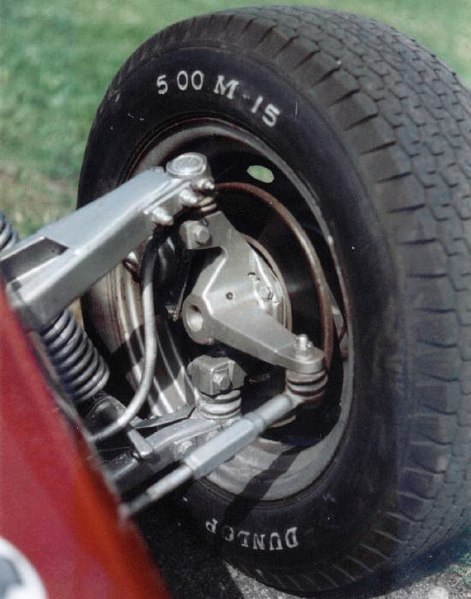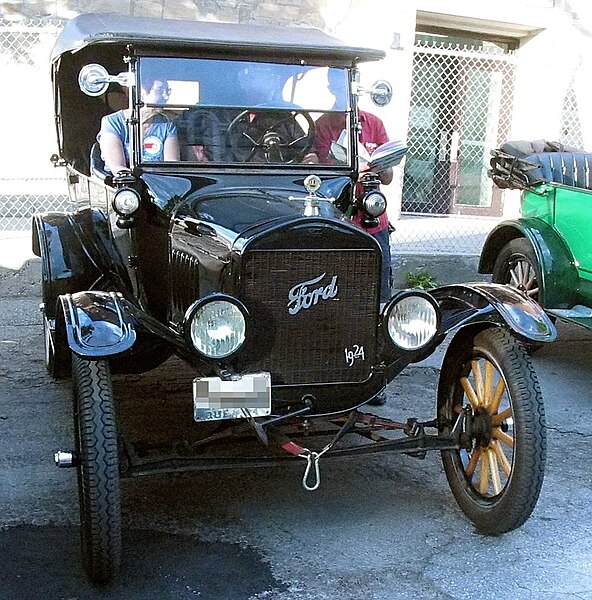A beam axle, rigid axle or solid axle is a dependent suspension design in which a set of wheels is connected laterally by a single beam or shaft. Beam axles were once commonly used at the rear wheels of a vehicle, but historically they have also been used as front axles in four-wheel-drive vehicles. In most automobiles, beam axles have been replaced with front (IFS) and rear independent suspensions (IRS).
Diagonal Panhard rod bolted to a black rectangular profile beam axle on a front-wheel drive 2002 Mazda MPV. This is an example of a "dead axle". A "live axle" doesn't just connect two wheels but drives them.
A live axle in a Jeep. This is the front suspension, using coil springs.
Suspension is the system of tires, tire air, springs, shock absorbers and linkages that connects a vehicle to its wheels and allows relative motion between the two. Suspension systems must support both road holding/handling and ride quality, which are at odds with each other. The tuning of suspensions involves finding the right compromise. It is important for the suspension to keep the road wheel in contact with the road surface as much as possible, because all the road or ground forces acting on the vehicle do so through the contact patches of the tires. The suspension also protects the vehicle itself and any cargo or luggage from damage and wear. The design of front and rear suspension of a car may be different.
Part of car front suspension and steering mechanism: tie rod, steering arm, king pin axis (using ball joints).
Van Diemen RF01 Racing Car Suspension.
American carriage showcasing thoroughbrace suspension—note the black straps running across the side of the undercarriage
The front suspension components of a Ford Model T.






